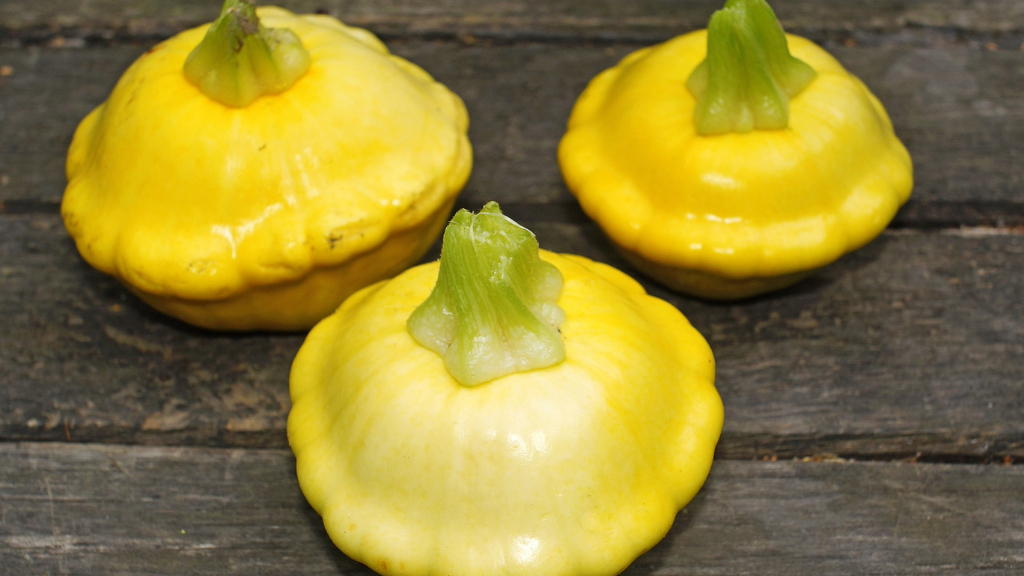Learn About Gelber Englischer Custard Squash


One of the more charming squashes is the patty pan. Gelber Englischer custard squash is actually even cuter, with a similar form but topped with a beret-like chapeaux. It has a wonderfully deep yellow to orange color and sweet flavor. According to Gelber Englischer squash information, this variety is well suited for cooler to temperate regions, so northern gardeners get ready for a treat!
What is a Custard Squash?
A custard squash is essentially the same as a patty pan. It has many more names such as scallop squash, custard marrow, granny squash, white squash and scallopini. There are varieties in yellow, white and green predominantly, but many heirloom varieties come in rosy orange. Most are picked when small and have tender flesh with sweet flavor and minimal seeds. The Gelber Englischer squash is a custard squash with the classic scallop shape. It has a decidedly different top than a regular custard squash. The flat top gives it the appearance of a muffin that was overfilled and spilled out the top. Skin may be smooth, slightly warty or even striated.
Gelber Englischer Squash Information
The Gelber Englischer variety originated in Gatersleben, Germany. The fruits are ready to consume in 50 to 60 days. These fast growing, prolific producers ramble broadly and need plenty of space. Vines don't get tall but they certainly spread out. The fruits are small, you can cup them in your palm, and weigh less than a pound (.45 kg.). The little squash have the best flavor when harvested at no more than 4 inches (10 cm.) across. Although color can vary a bit depending upon your soil, most fruit are lemon yellow. The squash may be eaten raw, roasted, grilled or sautéed. It is excellent when added to baked goods like quick breads. Most gardeners state they are best done simply or shredded fresh to add to salads, tacos and sandwiches where the buttery flavor shines through cleanly.
Growing Gelber Englischer Custard Squash
Gelber Englischer squash is suited to USDA zones 3 to 11. Squash prefers a soil pH of between 5.5 and 6.5. Custard squash should be placed in a sunny location. In areas with short growing seasons, it is advised to start them indoors 6 to 8 weeks before the date of the last frost. Warmer regions can plant seed directly into a prepared seed bed as soon as soil is 70 degrees Fahrenheit (21 C.). Loosen soil deeply and incorporate some well-rotted manure or compost to the soil. Water under the leaves to prevent powdery mildew. Common squash pests can be handpicked or use neem oil. If you wish to save seed, allow the squash to mature fully on the vine until you can hear them shake loose inside the fruit. Then remove the seeds, separating out any flesh, dry them and store in a cool, dark location until the following spring.
Gardening tips, videos, info and more delivered right to your inbox!
Sign up for the Gardening Know How newsletter today and receive a free copy of our e-book "How to Grow Delicious Tomatoes".
-
 Grow ‘Karl Rosenfield’ Peony Plants For The Ultimate Frilly Border Beauties And Cut Flowers
Grow ‘Karl Rosenfield’ Peony Plants For The Ultimate Frilly Border Beauties And Cut FlowersFor frilly double magenta peony petals infused with a heady fragrance, grow ‘Karl Rosenfield’ peony plants. Here’s how to cultivate the ultimate plushy blooms
By Tonya Barnett
-
 10 Common Composting Problems That Can Spoil Your Garden Gold – Plus Easy Fixes
10 Common Composting Problems That Can Spoil Your Garden Gold – Plus Easy FixesLearn how to troubleshoot common composting issues before they ruin your stash – from bad smells and bugs to materials not breaking down as they should.
By Susan Albert